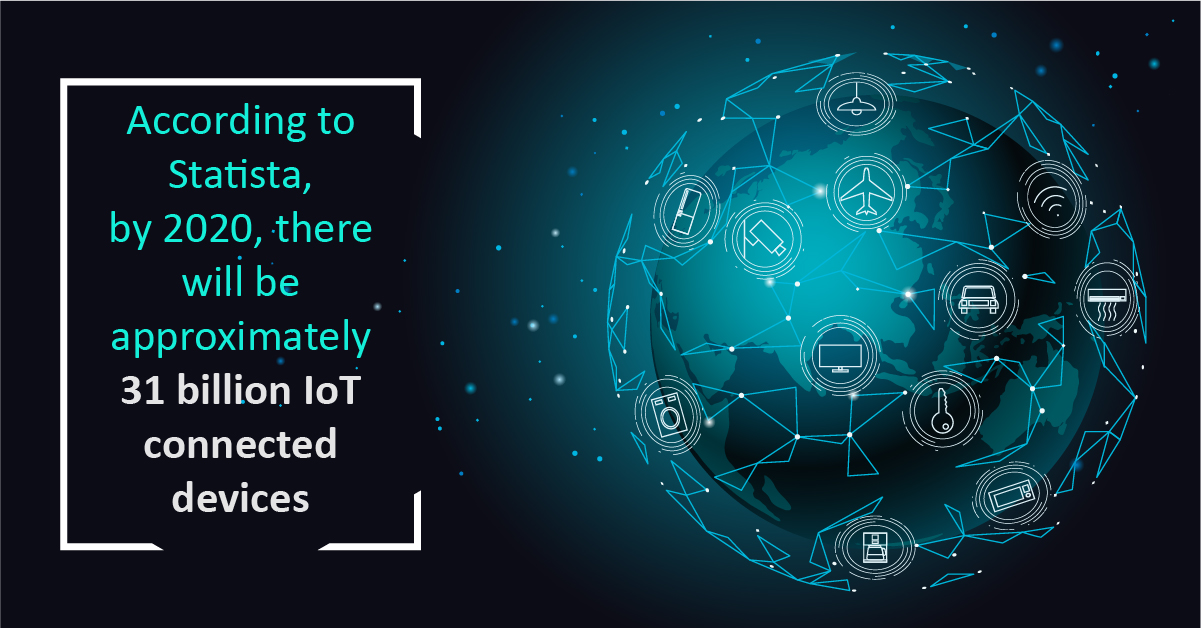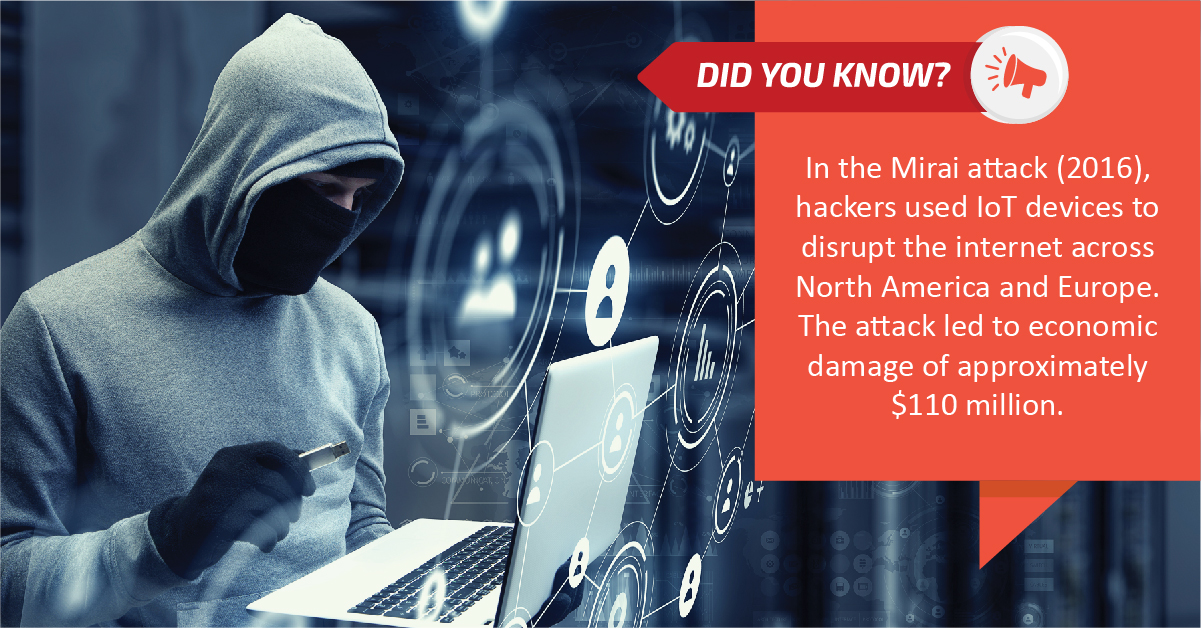Other recent blogs
Let's talk
Reach out, we'd love to hear from you!
Internet of Things (IoT) is fueling convergence and connectivity between ‘everything.’ Amidst the emerging technologies and perpetually changing trends, IoT intricately interweaves businesses and customers in the contemporary, digitally driven world. But at the same time, it also entangles the straggling crowd of hackers and attackers, who commits data breaches.
There’s no denying the fact that businesses see IoT as a growth propellant, but with the lack of security checks and balances in place, this emerging technology can prove to be malicious. Majorly, it will result in data loss at the initial stage, but as the ripples spread it will lead to a slew of losses—both tangible and intangible.
Therefore, at a time when all sorts of data—business, employees, customers, infrastructure, and many more—are susceptible to risks, it is imperative to devise measures that boost the security of millions of devices and networks connected through IoT.
Future of IoT and the Need for IoT Device Security

If we talk about the future of IoT, it looks ebullient. Right from manufacturing, healthcare, retail, agriculture to oil and gas and BFSI, the industry 4.0 is set to pounce upon the future business opportunities generated by IoT. A report by Statista informs that by 2020, there will be approximately 31 billion IoT connected devices worldwide.
With billions of devices connected through IoT, a humongous amount of data is generated. However, due to the lack of effective security protocols, most of the IoT devices are prone to hacking. For seamless functioning of IoT devices and the tasks and processes connected through those devices, the organizations need to follow risk-aware approaches and enterprise-grade practices to build a secure environment.
IoT Devices are Hard to Patch: Here’s how to Deal with Security Snarls
When IoT, as a technology, was being innovated and when plans to use it to connect devices and networks were at its primitive stage, security, perhaps, was not given much focus. Enterprises used the technology to reap business benefits, or created IoT-based products for end-users and launched it in haste. The security aspect went in the pipeline and before they could have done anything about it, new opportunities came in their hand.
However, considering the IoT security challenges, concurrent level of data breaches, and the constantly growing cybercrime, it is must that the businesses must adopt IoT security protocols and techniques to ensure complete protection to the valuable data. Following are some of the important steps that enterprise can use:
1. IoT Security Analytics
IoT devices are usually deployed in disparate environments. Therefore, it is important to track the activities that the diverse IoT devices undergo. IoT Security analytics is one way to do so. IoT security analytics helps organizations in structured gleaning of data generated by diverse devices and networks connected through the Internet of Things. It easily tracks any behavioral change in data processing and mitigates the possible threats in advance.
2. Public Key Infrastructure (PKI)
The growing number of hacking and data-breach cases has led to a surge in the demand for PKI (Public Key Infrastructure). PKIs are a set of protocols on which digital certificates are issued following a registration process. The registration process lists different devices, identities, or users and enables organizations in instantly spotting unidentified users, which helps in keeping the communication channels safe and secure.
3. Device Authentication
An effective mechanism, device authentication, is used to authenticate billions of devices that are connected. With strong passwords protocols, measures to protect user credentials, implementation of two-level authentication, and many other similar practices, businesses can scrutinize every single device trying to connect to the network.
4. Secured Internet Network
Vulnerable networks are prone to hacking and can witness DDoS (Distributed Denial-of-Service) attacks, for instance. Such attacks affect the functioning of connected devices, disrupt the services, and are often used to generate misguiding data. The secured Internet network must be used in these cases at places where the IoT devices are deployed and run.
5. Secured Cloud Platforms
Many businesses use the cloud to store enormous data generated by the diverse IoT devices. Therefore, it is essential to secure the cloud platforms which exchange data with IoT devices. Passwords need to be protected and updated at regular intervals; provisions should be implemented to block the account, for a defined time frame, after a few failed login attempts and the owner should be informed instantly; two-level security features should be enabled.
6. Encrypted Security Layers
In most cases, IoT devices are not designed with security layers, which make the devices highly vulnerable. Therefore, it is important to incorporate encrypted security layers while the IoT devices are in their development stage. The devices should be designed with updated operating systems and high-performant hardware that secures data right from the beginning of communication to the end. This would help in creating a safe environment for storing and transferring data.
7. Software Update
In various industries, IoT devices, connected to sensors, are stationed in remote areas to collect data. Therefore, the software update for such devices becomes critical. Software updates save the devices from becoming easy prey to hackers. The updated firmware and software helps the IoT devices to incorporate new features, besides helping in identifying and eliminating the security bugs.
Raise your IoT Device Security Game

Whether the nascent cyber laws are apt to deal with proactive cybercriminals worldwide or not, the demand for IoT security products is perpetually growing in the maturing market. News reports inform that the North American IoT security market is expected to grow by approximately 25% per year and the growth will be driven by the continuously rising demand for IoT device security solutions, cloud-based business applications, and other similar demands. It won’t be a hyperbole to say that the other parts of the world will too see a surge in the demand for IoT security solutions, depending on their increasing use of IoT devices and networks.
IoT device security is not only about anticipating and mitigating business risks and safeguarding information, identity, or avoiding financial loses, but it is more about building an enduring relationship with customers for a prosperous future.
Kellton is among the leading IoT security vendors, providing solutions that can help you safeguard your connected devices and networks. Learn about the IoT possibilities for the digital transformation of enterprises and contact us to get started.






